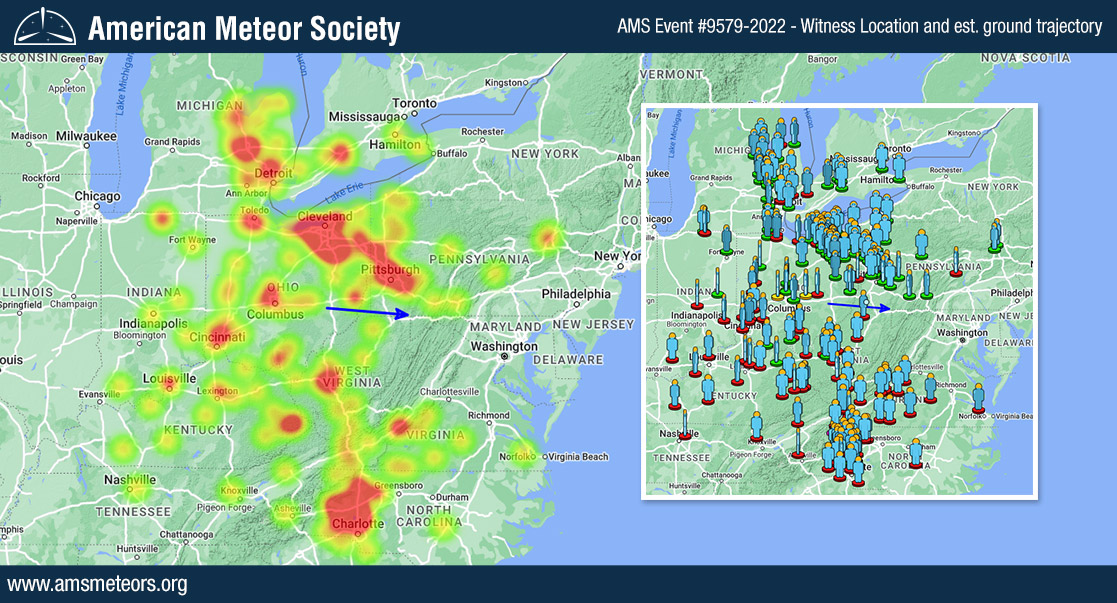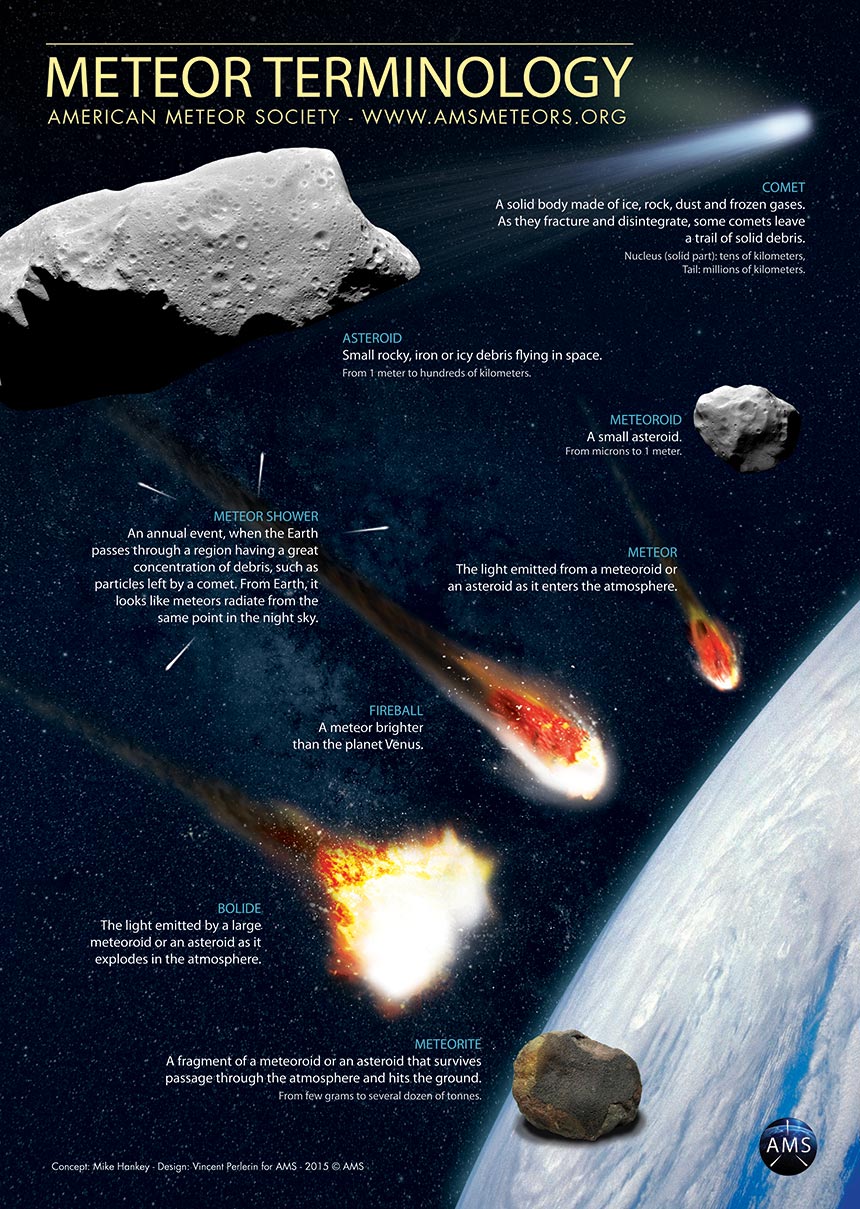More than 1100 reports and 10 videos from 14 states
The AMS received 1102 reports so far and some videos displaying a fireball event that occurred over Ohio and West Virginia on Thursday December 1st 2022, 7:34 PM Eastern Standard Time (Dec 2nd, 2022 0:34 Universal Time).
The initial computer generated trajectory of the AMS #2022-9579 event show the fireball entering the atmosphere few miles north of Cumberland, OH and terminating few miles southeast of Pittsburgh, PA. More accurate results are now available through an analysis conducted by NASA that shows that the meteor was first sighted 52 miles (84 km) above the Ohio town of Morganville. Moving downward at a shallow angle and almost due east at 34,500 miles per hour (55,500 km/h), the fireball traveled 113 miles (182 km) through the atmosphere before disintegrating 19 miles (31 km) above the town of Ringgold in West Virginia, just south of Morgantown. The duration of this event is relatively long as the fireball was visible for almost 10 seconds. The fireball was produced by a meteoroid approximately 5 inches (12 cm) in diameter with a weight around 3 pounds (1.3kg). The event has been captured by 3 NASA meteor cameras in the area and has been reported by witnesses mainly from Alabama, Georgia, Indiana, Kentucky, Michigan, Ohio. The AMS also received reports from Maryland, North Carolina, New York, Pennsylvania, South Carolina, Tennessee, Virginia, West Virginia and from Canada (Ontario).
It is doubtful that this fireball produced meteorites on the ground – the shallow entry angle, relatively high speed at last sighting and lack of doppler radar signatures showing falling meteoritic particles indicate that the fragment’s disintegration produced no substantial pieces.
This was not a member of the Geminid meteor shower, which will reach its peak on the night of December 13/14.
Submit an Official Fireball Report
If you want to learn more about Fireballs: read our Fireball FAQ.
A fireball is a meteor that is larger and brighter than normal. Most meteors are only the size of tiny pebbles. A meteor the size of a softball can produce the light equivalent to the full moon for a short instant. The reason for this is the extreme velocity at which these objects strike the atmosphere. Even the slowest meteors are still traveling at 10 miles per SECOND, which is much faster than any round fired from a firearm. Fireballs occur every day over all parts of the Earth. We normally receive about 100 reports each day. It is rare though for an individual to see more than one or two per lifetime as these short-lived events also occur during the day, on a cloudy night, or over a remote area where no one sees it. Observing during one of the major annual meteor showers can increase your chance of seeing another one of these bright meteors even though, this event wasn’t from a known meteor shower. In this case, the meteor is called “sporadic”.
The map below displays just how widely this object was visible from at least 14 states. Visit the event page for this fireball to view the videos and read comments from the witnesses.

So far, we received 10 videos of this fireball – all accessible from the event page.
Fireball, Bolide?
Several thousand meteors of fireball magnitude occur in the Earth’s atmosphere each day. The vast majority of these, however, occur over the oceans and uninhabited regions, and a good many are masked by daylight. Those that occur at night also stand little chance of being detected due to the relatively low numbers of persons out to notice them.
Additionally, the brighter the fireball, the more rare is the event. As a general thumb rule, there are only about 1/3 as many fireballs present for each successively brighter magnitude class, following an exponential decrease. Experienced observers can expect to see only about one fireball of magnitude -6 (crescent moon) or better for every 200 hours of meteor observing, while a fireball of magnitude -4 (Venus) can be expected about once every 20 hours or so.

 American Meteor Society
American Meteor Society
I m pretty sure I saw this meteor while driving home along Highway 6 N about 15 km northwest of Hamilton ON (Canada)…a yellow blue green fireball which could be seen for at least 5 seconds at approximately 7;30 pm on Thursday Dec 1 2022
Just saw a green fireball land in a wooded portion of our property. Wish it wasn’t so late and raining I’d go look for it! Located in Rushing Arkansas
We saw a fireball on the same day at basically the exact same time but in northern CA!
I saw a huge fireball streak across the sky about 4:30am 16December 2022 in Stafford, VA. Did anyone see it too? It looked like it was a few miles away. It filled up my window, from the beginning to the end of its tail.
Thank you Vincent P. I saw a fireball and reported it last night (302328). I found this site easy to use. It’s nice to have a place where we can ‘say something’ about what we saw, to share our amazement.